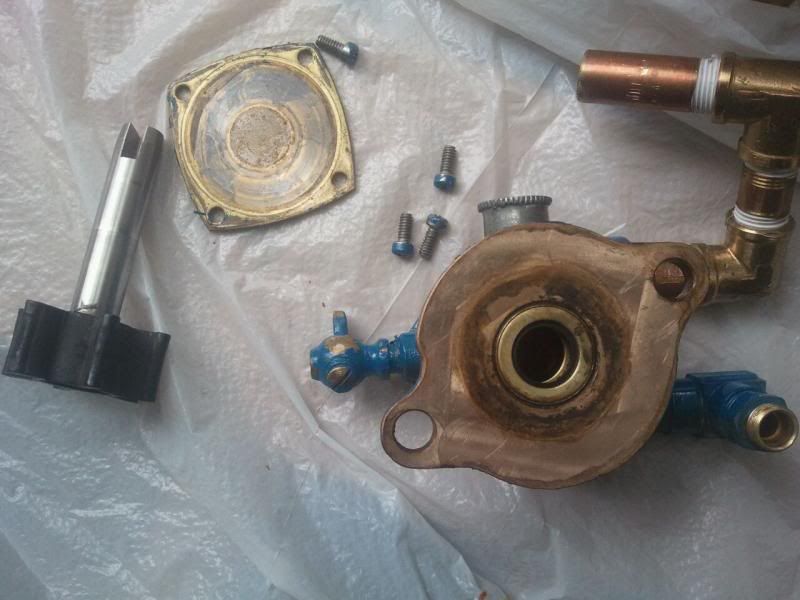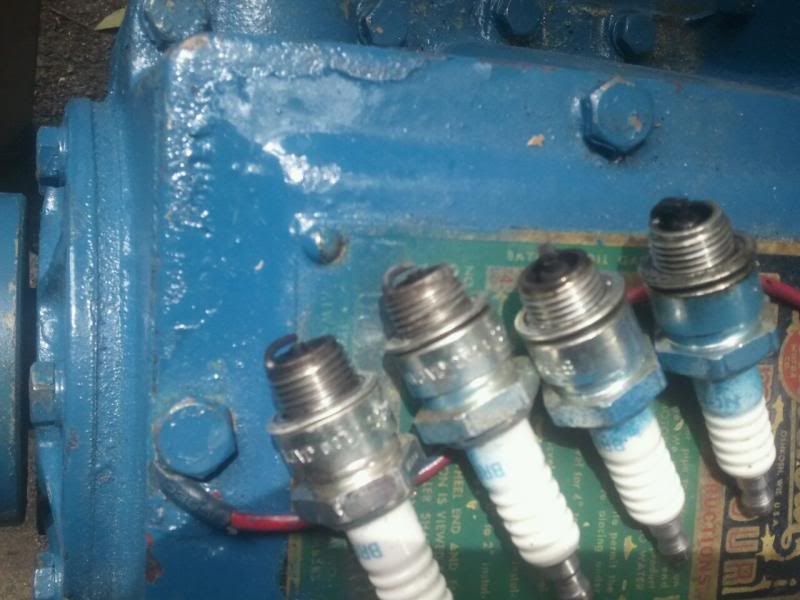Did a compression check on the engine today, hoping to eliminate another potential deal breaker for this install. Compression is good on all four cylinders, ranging between 95 and 115 (the other two were 105 and 100). I was glad about this, until I noticed the milky light brown color of the oil that would jet out of the new nipple I put in (but never finished the install) for a new oil pressure gauge. When I drained the oil, which has less than one hour of running time, it was all milky brown.
I searched through many threads, and decided to proceed via a process of elimination, starting with the water pump:

The impeller shows some wear, and I will most likely replace it and keep this one as a backup. Is there a way to determine the condition of the seals? I realize that if these are the same ones that have been in place for many years, they most likely do need replacing.
James
I searched through many threads, and decided to proceed via a process of elimination, starting with the water pump:

The impeller shows some wear, and I will most likely replace it and keep this one as a backup. Is there a way to determine the condition of the seals? I realize that if these are the same ones that have been in place for many years, they most likely do need replacing.
James




 on the second attempt I was able to get the hose clamp lower around the nipple on the manifold and I tightened it as far as I could. When I added the air, s l o w l y, the top of the innertube portion of the valve began to inflate, and stayed inflated. The biggest leak of air was around the metal tube connection to the block, behind the distributor pedestal. I put a small thread-on tire pump onto the valve and got readings of around 15 psi this attempt, and then of over 50 on the second. after that, it was all down hill, as my zealous attempts to tighten the rubber around the nipple resulted in the rubber leaking.
on the second attempt I was able to get the hose clamp lower around the nipple on the manifold and I tightened it as far as I could. When I added the air, s l o w l y, the top of the innertube portion of the valve began to inflate, and stayed inflated. The biggest leak of air was around the metal tube connection to the block, behind the distributor pedestal. I put a small thread-on tire pump onto the valve and got readings of around 15 psi this attempt, and then of over 50 on the second. after that, it was all down hill, as my zealous attempts to tighten the rubber around the nipple resulted in the rubber leaking.
Comment